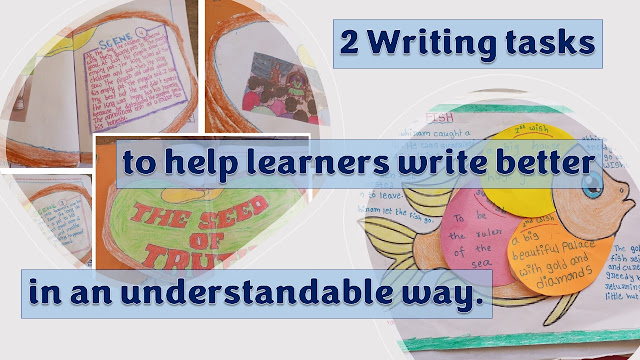"Sound-Alikes Made Simple: Engaging Activities for Teaching Homophones"
Homophones are words that have the same pronunciation but different meanings and spellings. Here are some fun activities to teach homophones to primary students.
1. Homophone Dictionary Hunt:
- List out 20 sets of Homophones and write them down on the board.
- Distribute an activity sheet (Colour Paper)
- Tell your students to choose any of the 5 set homophones and write them on the activity sheet in blocks.
- Tell them to open their dictionaries and find the meanings of the pairs.
- Tell them to write their meanings under the words as shown in the below activity sheet.
- And also tell them to write a sentence using the word given in the dictionary.
- Facilitate them to write properly in the given activity sheet and complete the activity.
- Click here to watch the video.
2. Homophone Bingo:
Create bingo cards with homophones on them. Call out the definition of a homophone and have the students find the corresponding word on their bingo card. The first student to get a full row or column wins.
3. Homophone Match-up:
Create a set of cards with homophones on them, and another set with their corresponding meanings. Have students match the homophone cards with their corresponding meaning cards.
4. Homophone Pictionary:
Have students draw pictures of homophones and have their classmates guess what they are drawing. For example, they could draw a picture of a knight and a night, and their classmates would have to guess which homophone they are trying to depict.
5. Homophone Charades:
Similar to Homophone Pictionary, but instead of drawing pictures, students act out homophones while their classmates try to guess which one they are acting out.
6. Homophone Scavenger Hunt:
Hide homophone pairs around the classroom or schoolyard and have students find them. For example, you could hide a pair of two and too, or pair and pear.
7. Homophone Song:
Create a catchy song that includes homophones, and have students sing along. This is a fun way to help students remember homophones.
8. Homophone Storytime:
Read a story to the class that includes homophones, and have students identify them as they hear them. This is a great way to integrate homophones into language arts lessons.
Remember to make the activities interactive, engaging, and age-appropriate for primary students. These activities can help students learn homophones in a fun and memorable way.





Comments